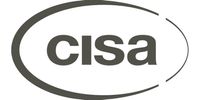
- Home
- Companies
- Cisa Group S.R.L.
- Products
- Wsd The New Frontier for Medical Waste ...

Wsd The New Frontier for Medical Waste Treatment
The issue of medical waste is increasingly relevant: the recent Covid-19 pandemic with its resulting economic consequences has underlined how crucial it is to have integrated and definitive solutions. Hospitals and private healthcare facilities of all sizes are faced with complex and costly procedures for medical waste management. The storage, transport, and treatment of infectious hospital waste constitute one the highest costs for the healthcare industry, both economically/financially and from an environmental standpoint. We are talking about a production of 144 thousand tons of waste per year in Italy alone. Following the Covid-19 pandemic, medical waste increased by 40% in 2020, up to 300 thousand tons/year. This growth is related to a higher number of hospital admissions and the use of PPEs, which has increased exponentially for well-known reasons.
Most countries are developing new rules and guidelines to reduce the cost and environmental impact of infectious waste, paying special attention to the United Nations’ Sustainable Development Guidelines (SDGs).
Generally, new legislation has the following objectives:
TREATING WASTE AT THE SOURCE (AN EXAMPLE OF THIS IS THE EU WASTE MANAGEMENT LEGISLATION: “PROXIMITY: WASTE SHOULD BE DISPOSED OF AS CLOSE TO THE SOURCE AS POSSIBLE”).
The cumulative effect of these guidelines is pushing legislators to promote on-site medical waste sterilization and treatment.
Cisa Group is leading the field with the invention of a Waste Sterile Department (WSD®), which is based on and adapts the principle of the CSSD , from which the new technology for medical waste treatment is directly derived.
Infectious waste known or suspected to be contaminated with pathogens classified in Category A in the Carriage Regulations should be treated on- site prior to removal to a disposal facility; on-site treatment may include autoclaving in purpose-built autoclave facilities before being transported.
5.34
Wherever possible, Category A infectious substances (including waste) should be treated on- site (using an autoclave or equivalent).
The Italian legislature has recently introduced the Simplification for Medical Waste Management., and many other countries are introducing similar regulations.
The Italian Converted Into Law Decree 40/2020, in Art.30 Bis and the subsequent Italian Legislative Decree 76/2020, in Art.63 Bis, establish that medical waste at infectious risk only, subjected to sterilization procedures according to the provisions of Presidential Decree 254 “Medical Waste”, at public and private healthcare facilities, falls under the legal status of urban waste.
The concept of simplification for medical waste management is an important innovation: it means that medical waste, properly sterilized, can be disposed of as undifferentiated waste: without having to be sent to the incinerator, it can be treated as mixed municipal waste according to EWC 20 03 01.
In order to implement this smart management of infectious medical waste, the institution must equip itself with appropriate technology. Cisa WSD® allows for the application of this procedure in full compliance with regulations, with safe and environmentally friendly results.
CRITICAL ISSUES AND RISKS FOR HEALTHCARE INSTITUTIONS, OPERATORS AND THE ENVIRONMENT
There are many critical issues related to the management of infectious hospital waste.
The storage, transport and treatment of medical waste have a huge environmental impact.
- Lower waste volumes
- Waste can be treated as mixed municipal solid waste
- Up to 30 days of storage time
